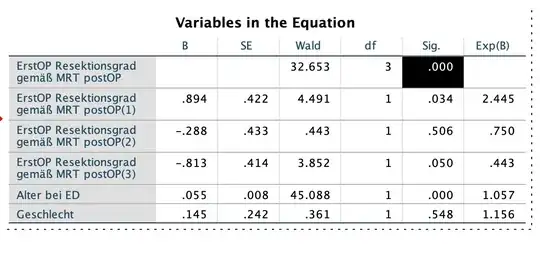The key here is noting the number of degrees of freedom for the Wald test that provided the p-value highlighted in black. Your 4-level categorical predictor has 3 degrees of freedom, so that presumably represents the multi-parameter Wald test that evaluates together all levels of the predictor. The p-values, regression coefficients (B) and hazard ratios (Exp(B)) are for each of the other levels against the reference level.
I would caution you, however, with respect to your approach:
I performed univariate analysis to identify predictors of survival in a cohort. In a second step I performed multiple cox regression of the factors significant in univariate analysis.
That can be a misleading way to set up a Cox model. Any type of automated predictor selection is generally not a good idea. Furthermore, a Cox model can behave similarly to logistic regression with omitted-variable bias, so that omitting any predictor associated with outcome can bias downward the magnitudes of the predictors retained in the model. You might thus have missed a predictor that might be important when other predictors are taken into account.
There are much better ways to set up such a model. You generally want to to use your knowledge of the subject matter to select or potentially combine predictors rather than use single-predictor p-values to drive the process. If your interest is in prediction, you generally want to have as complete a model as you can without overfitting, or use penalization methods to include more predictors while minimizing overfitting. See for example Frank Harrell's course notes on regression modeling strategies.
